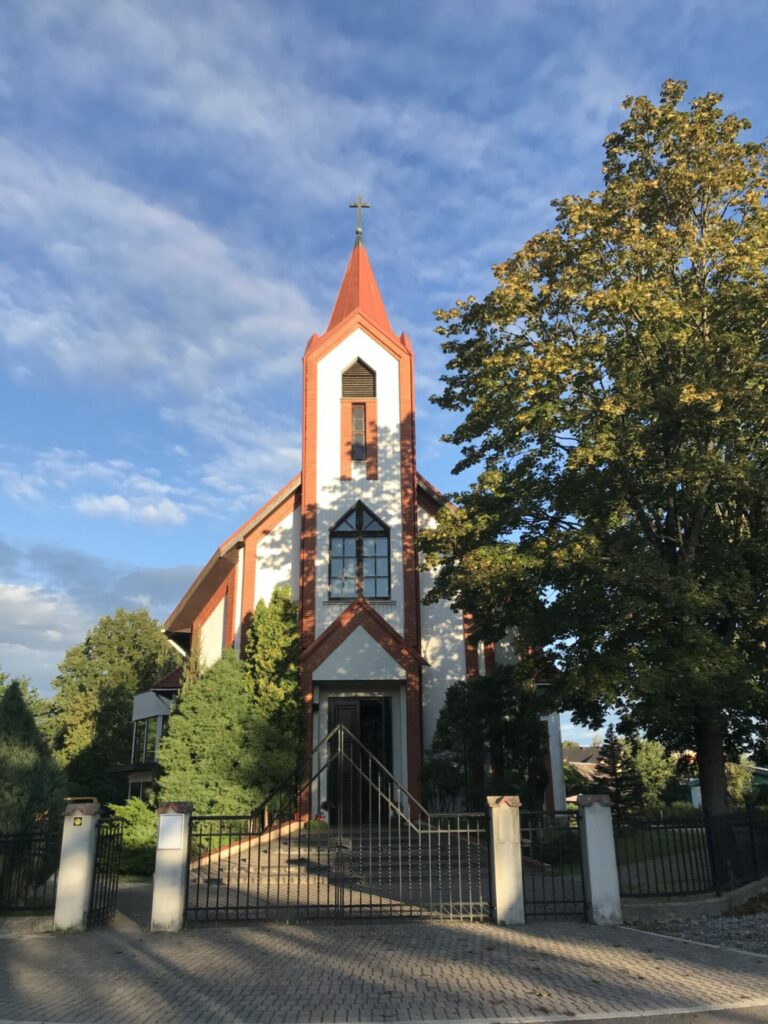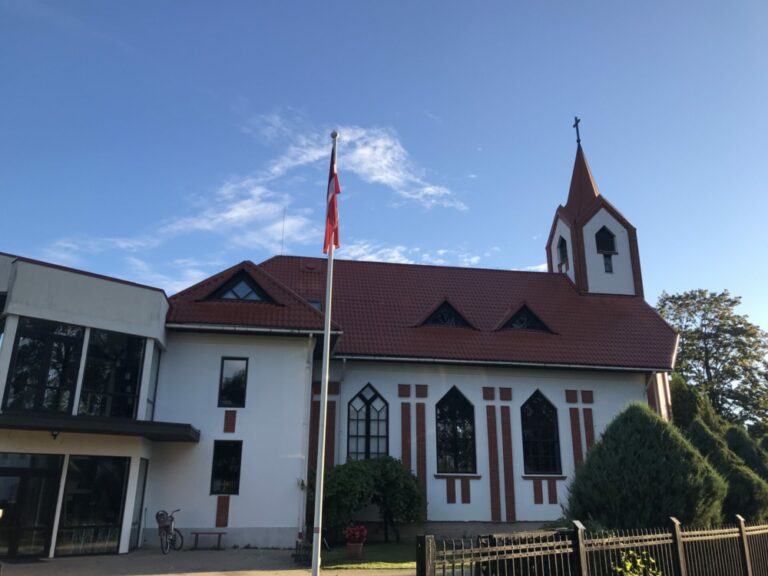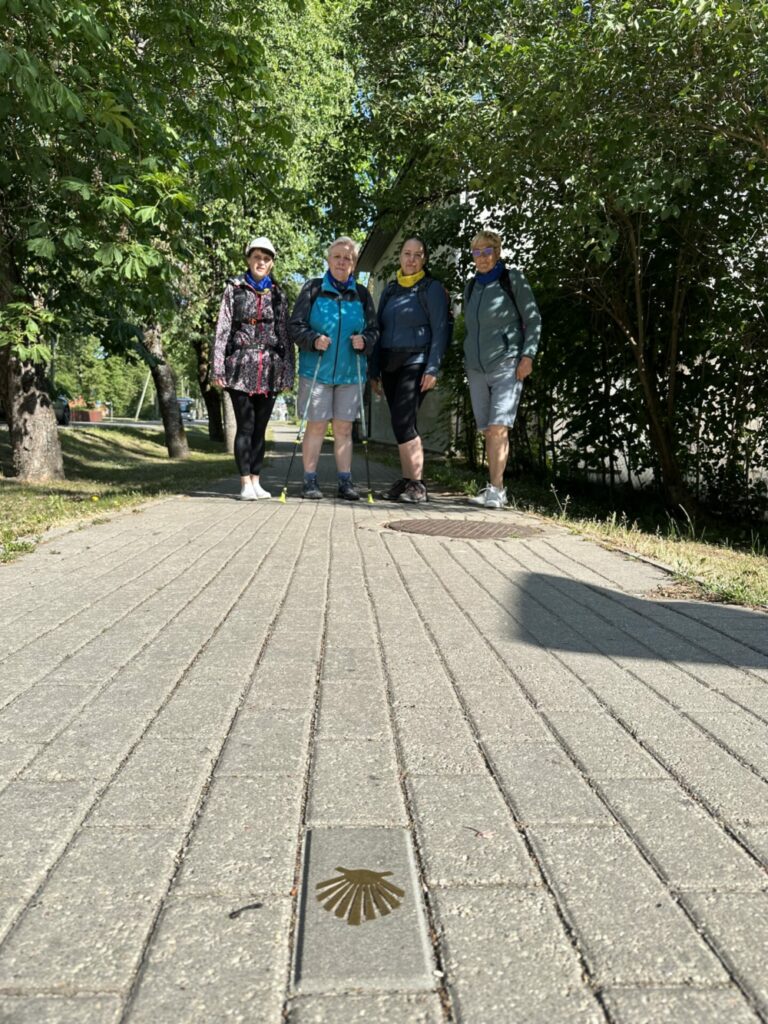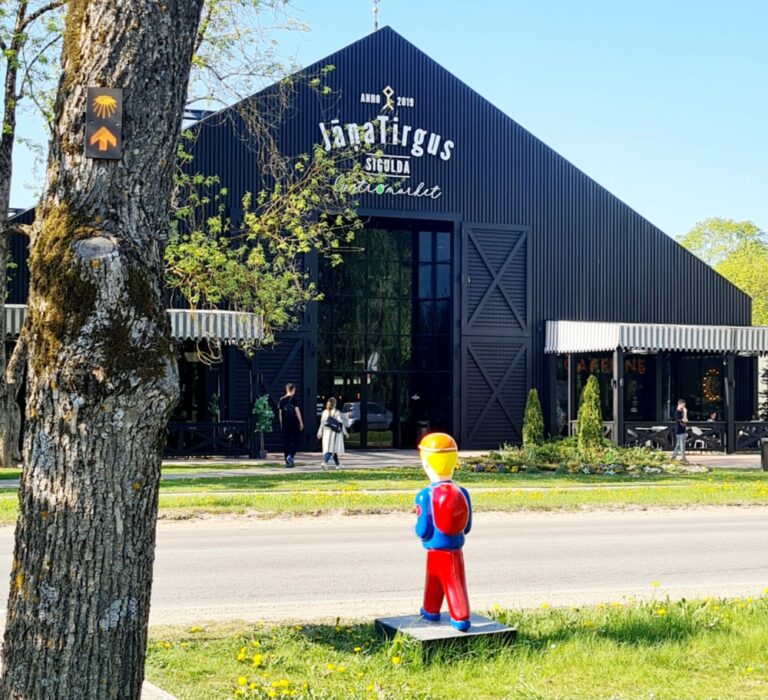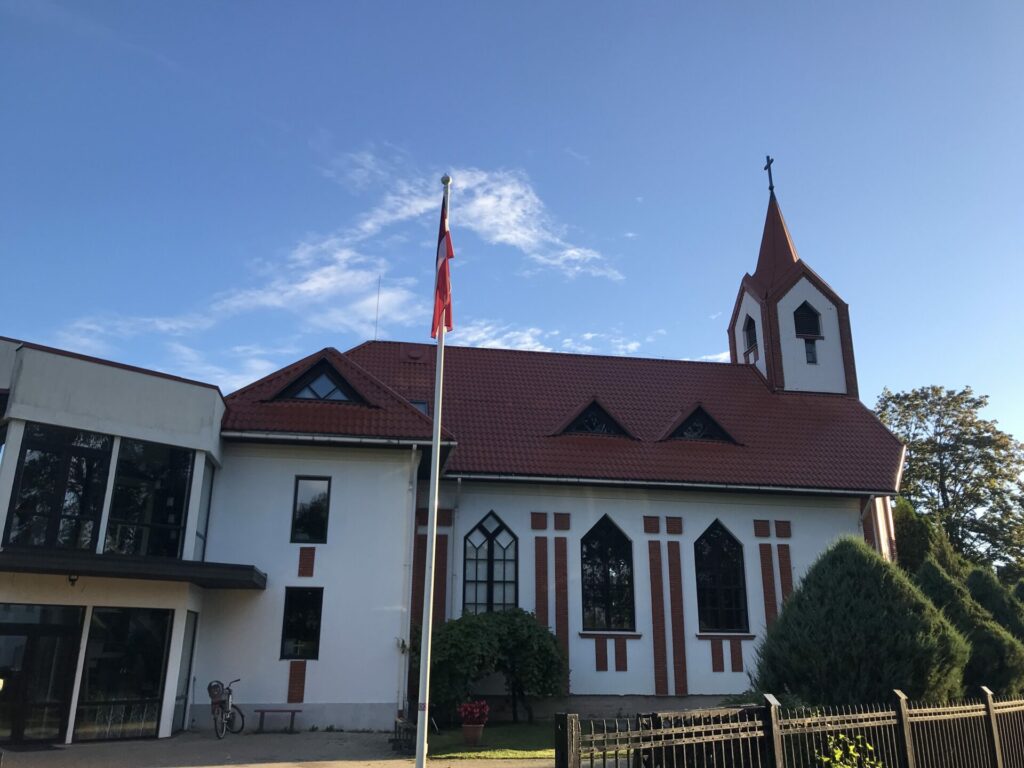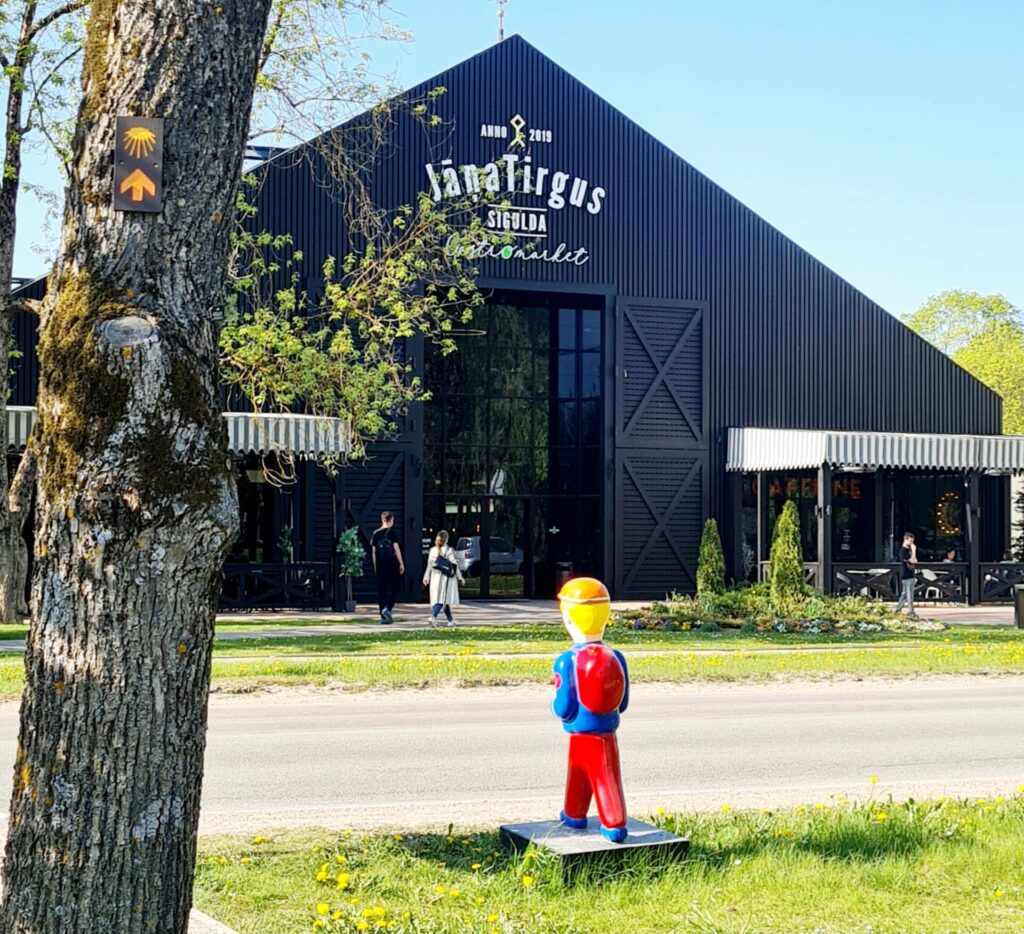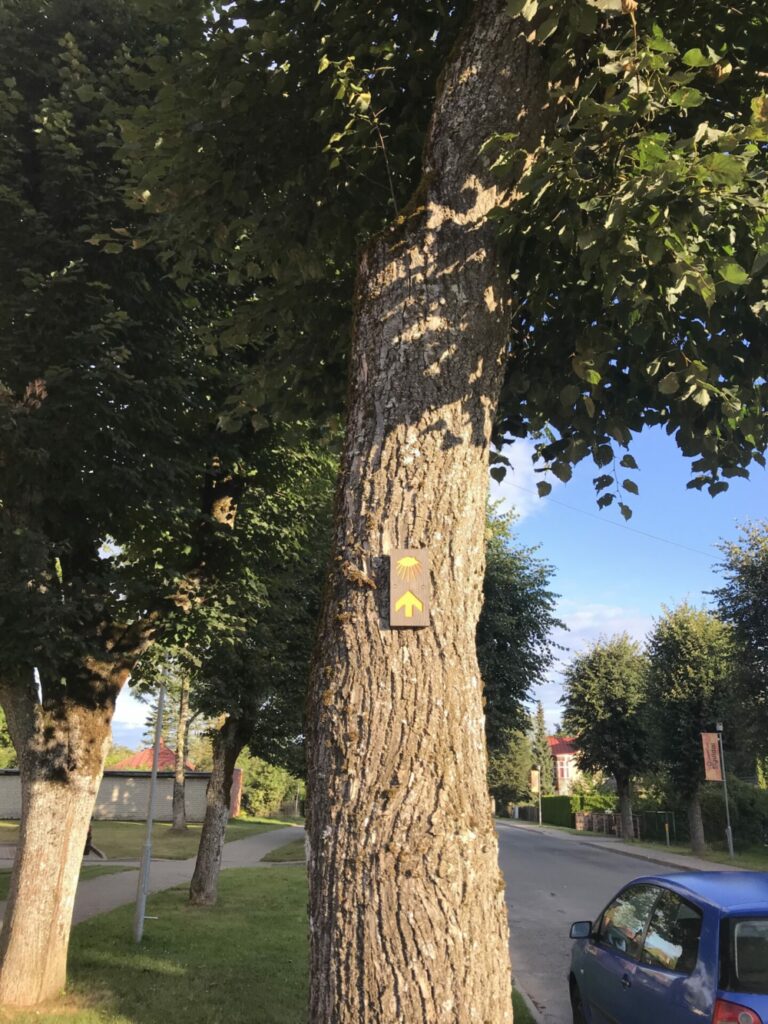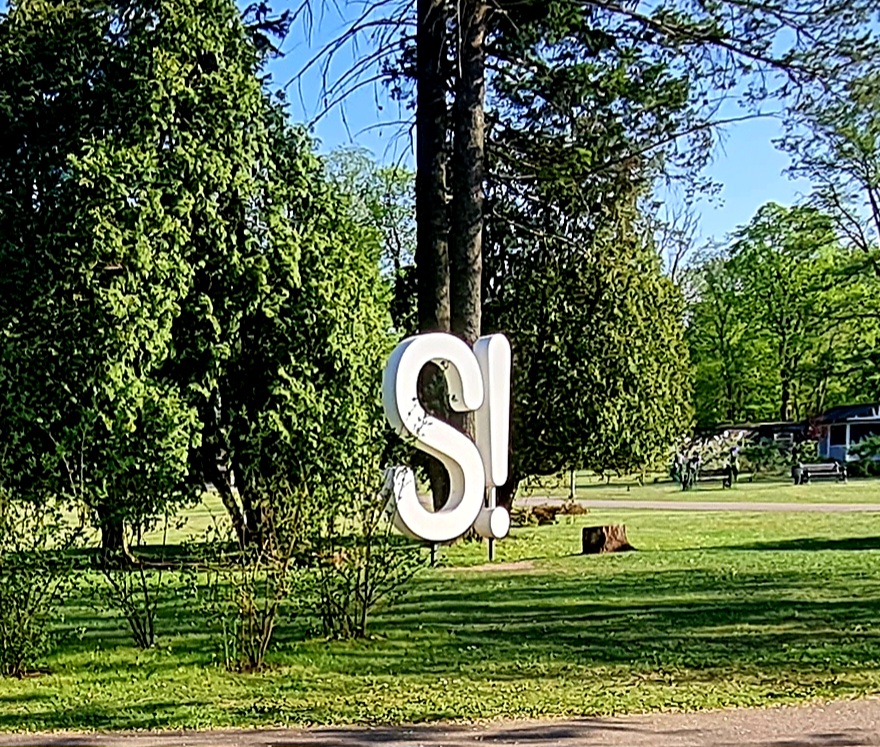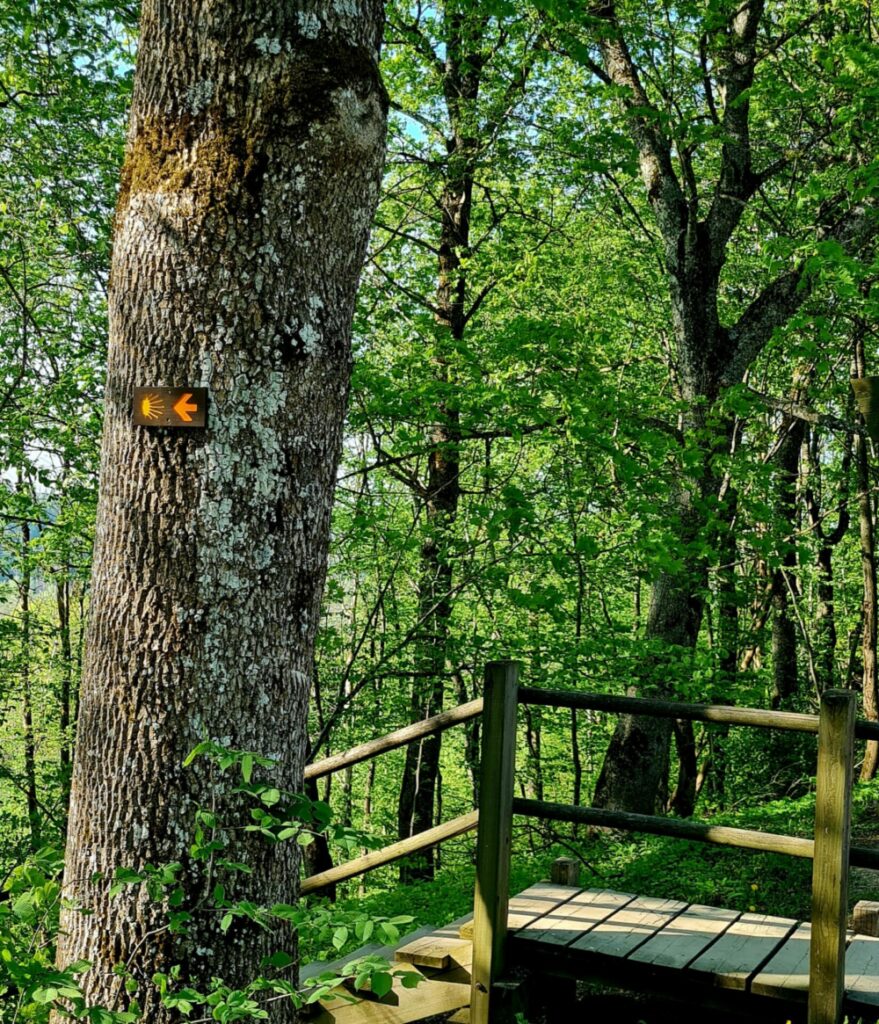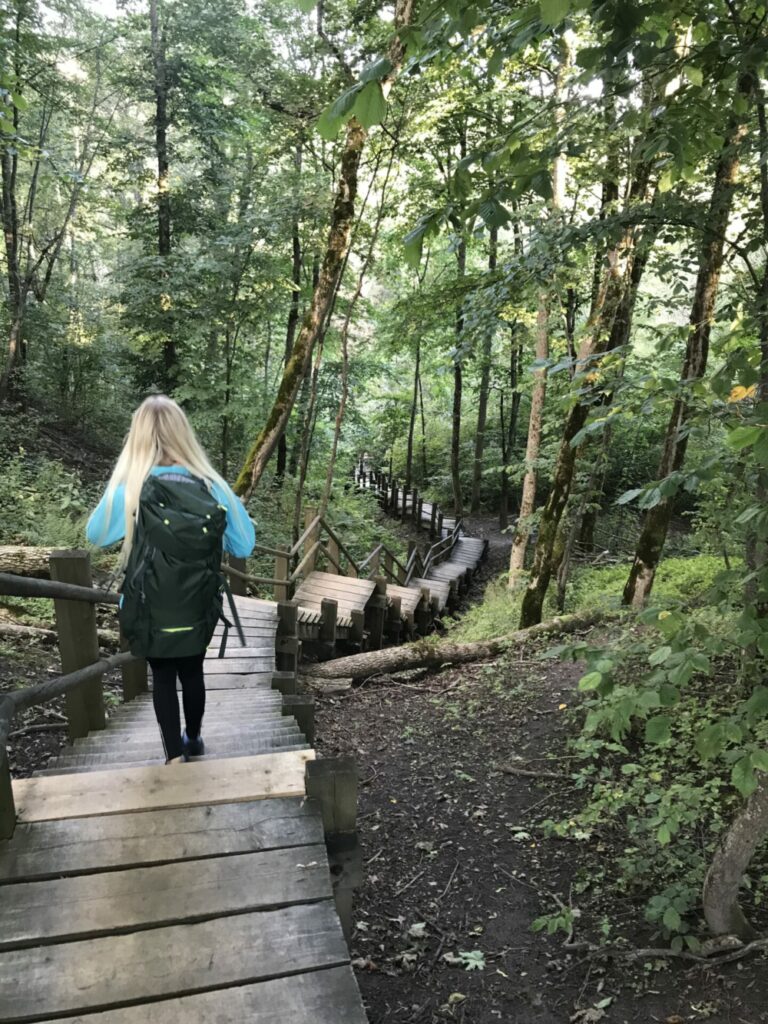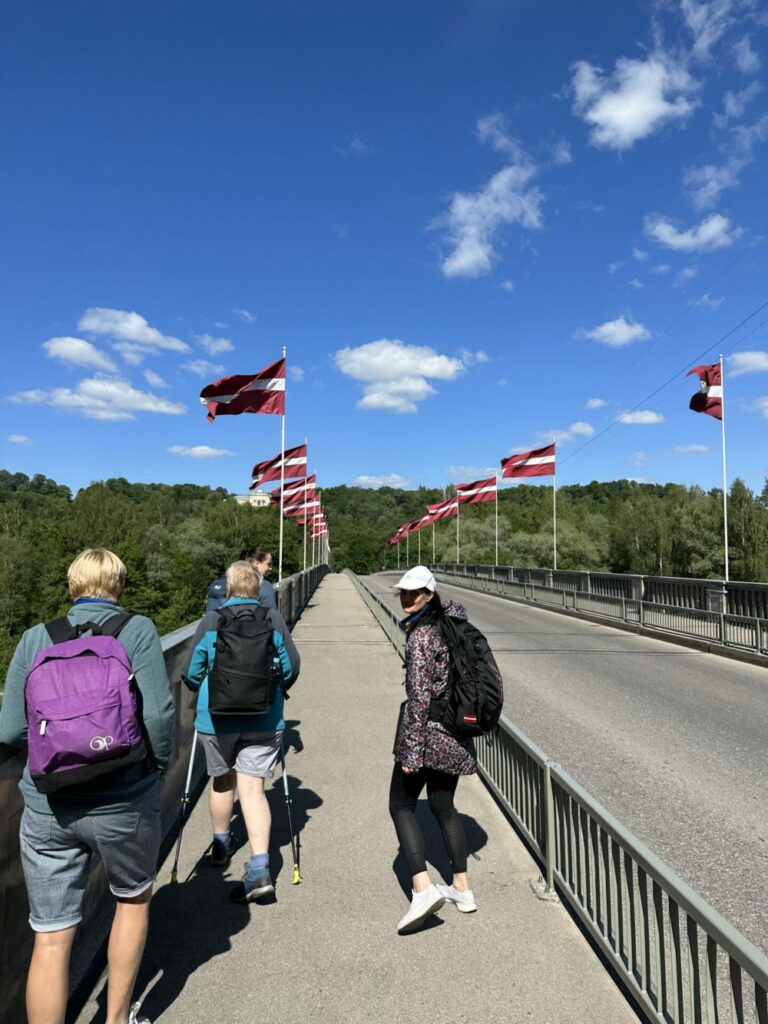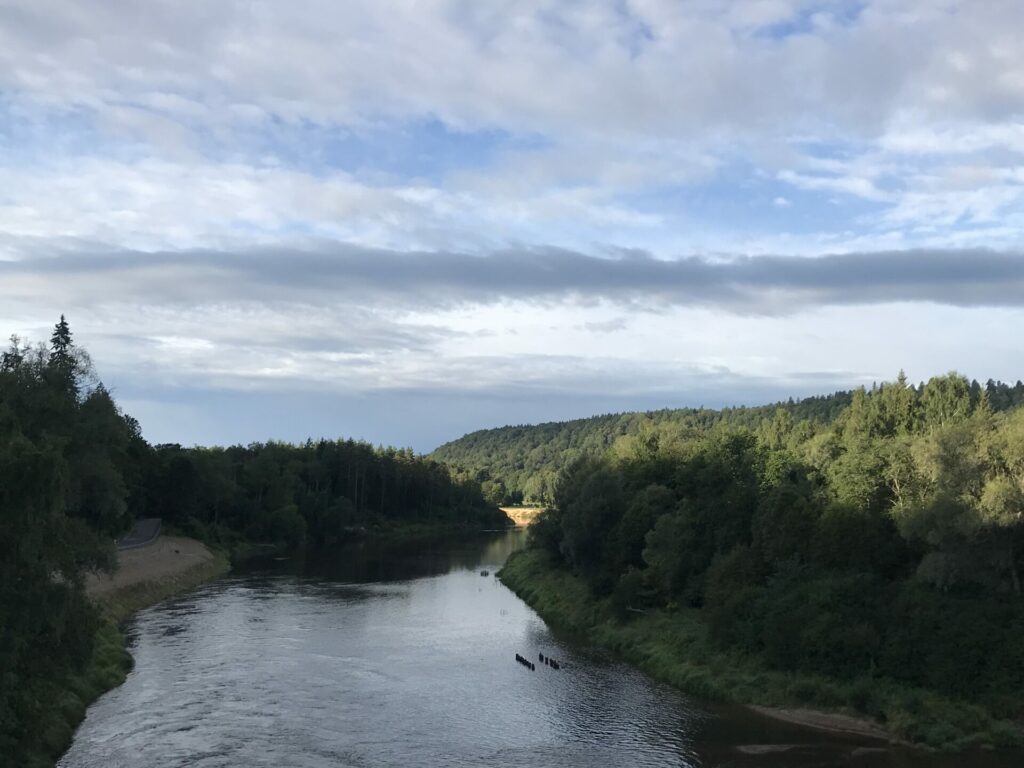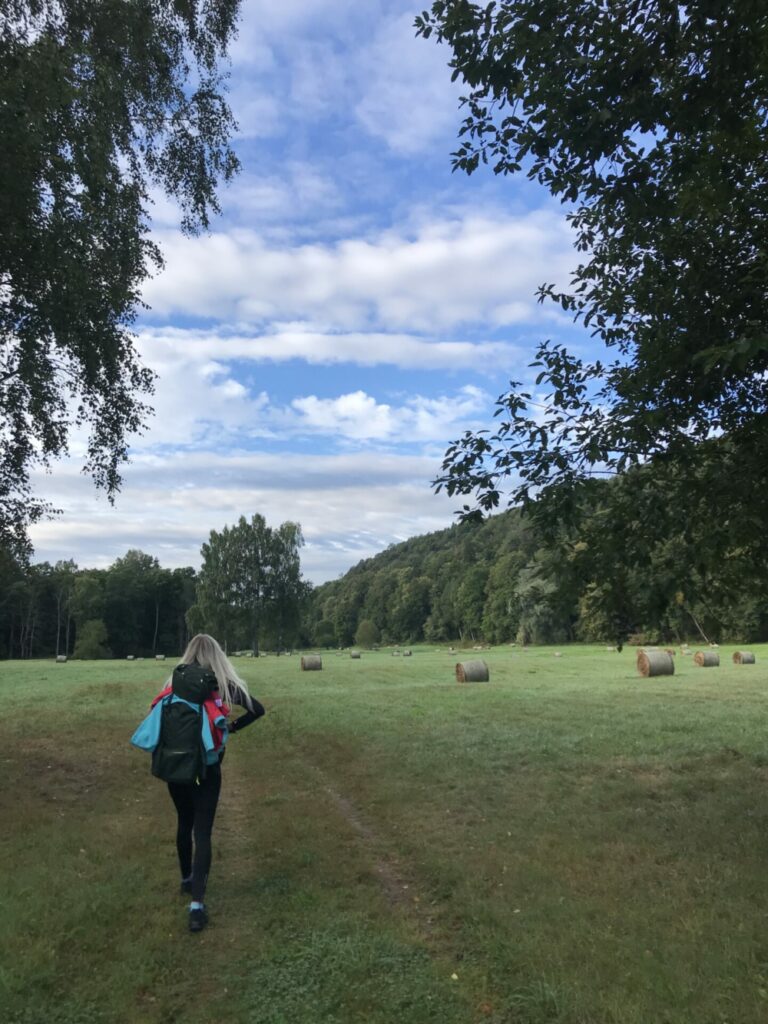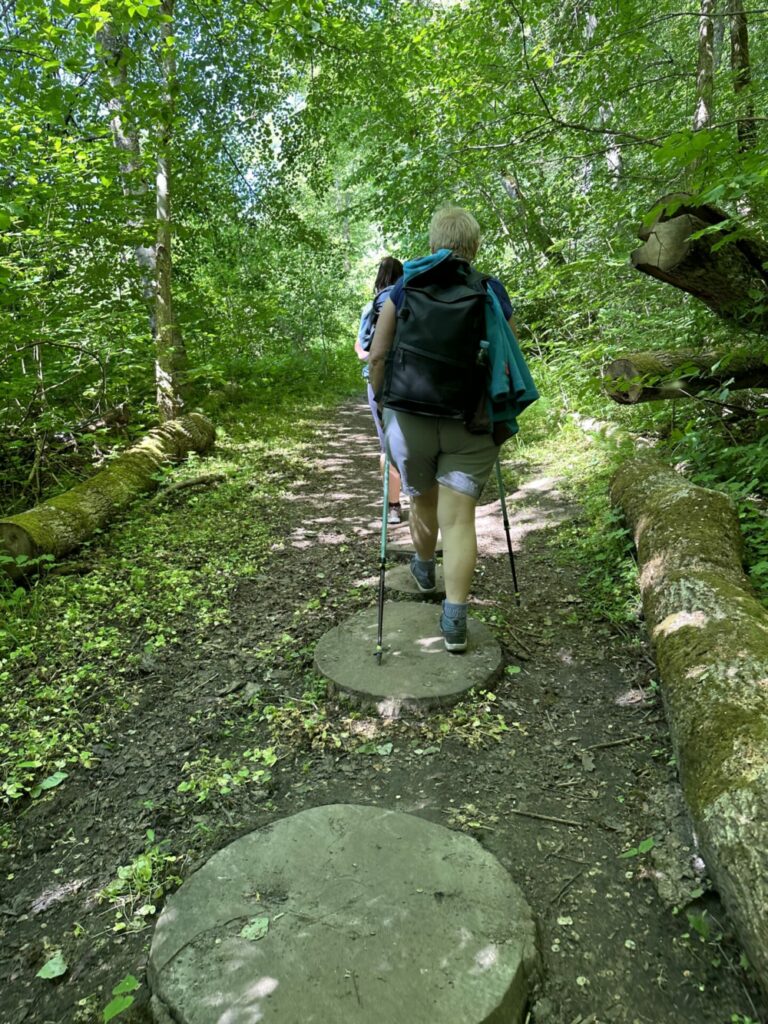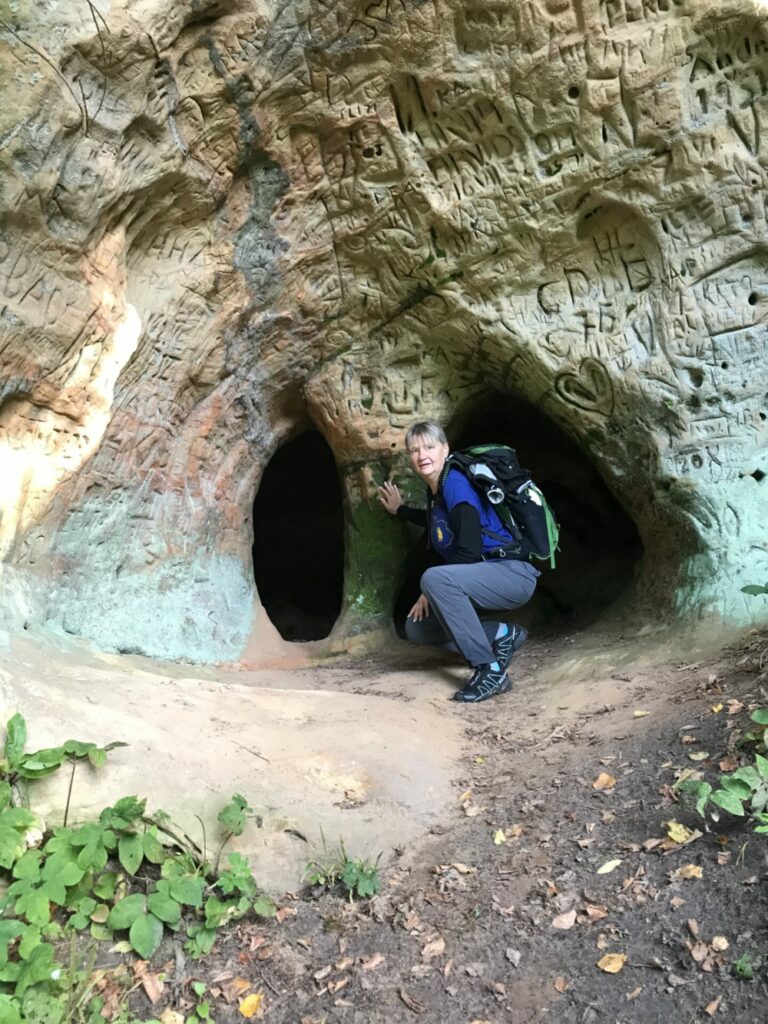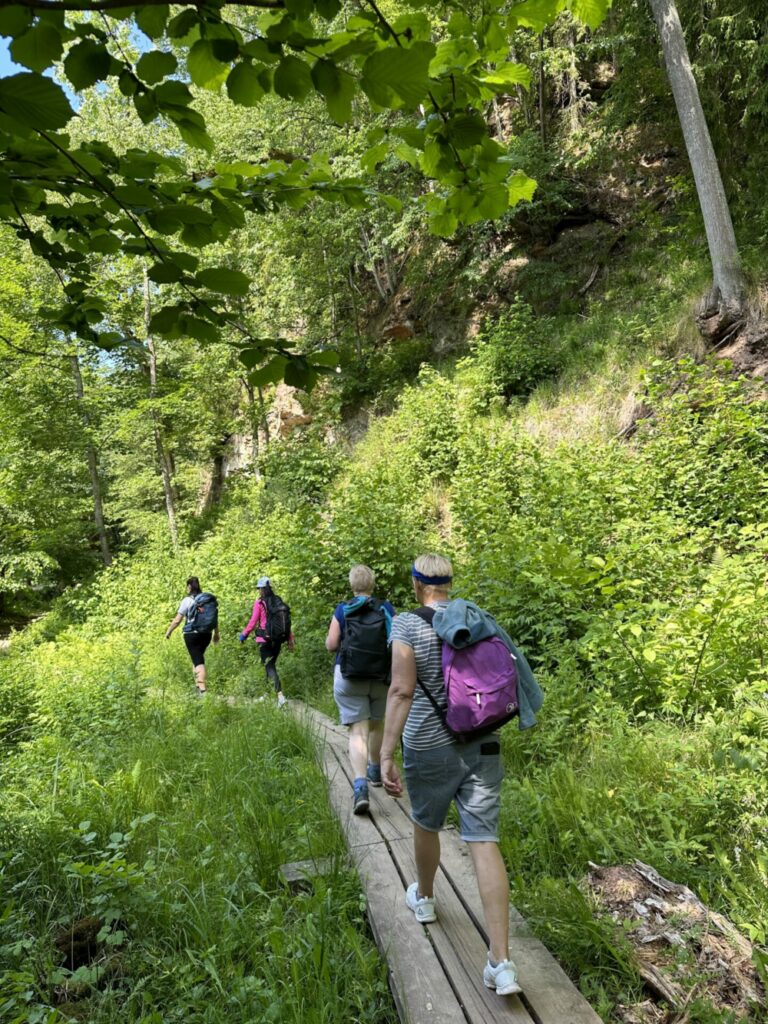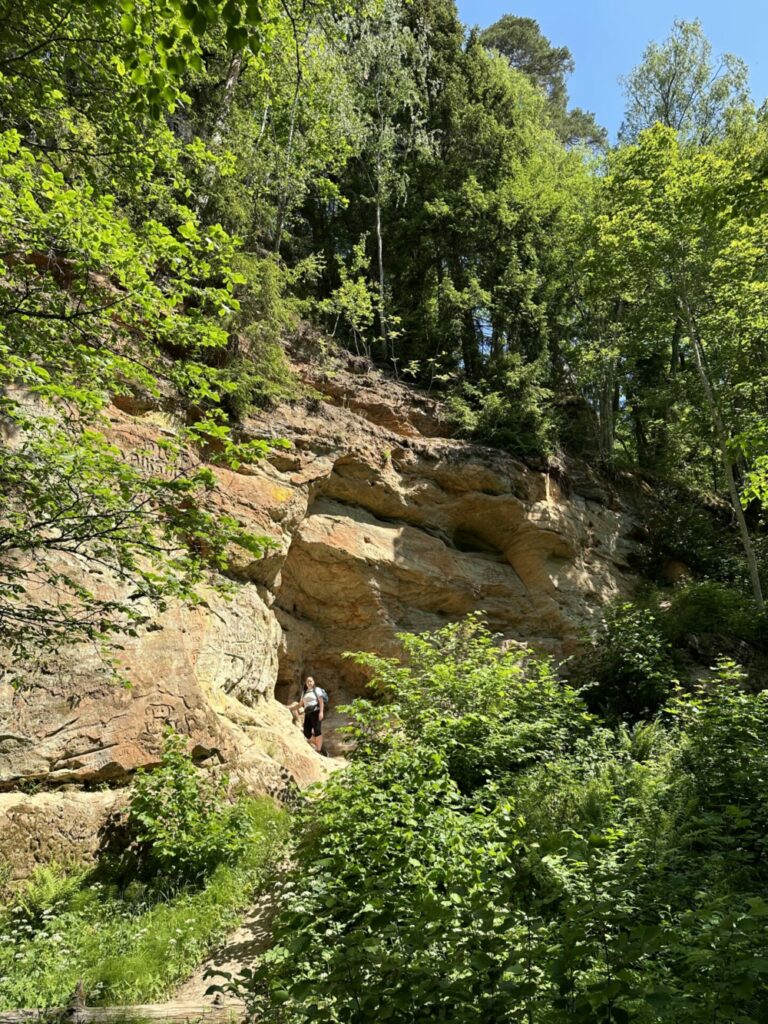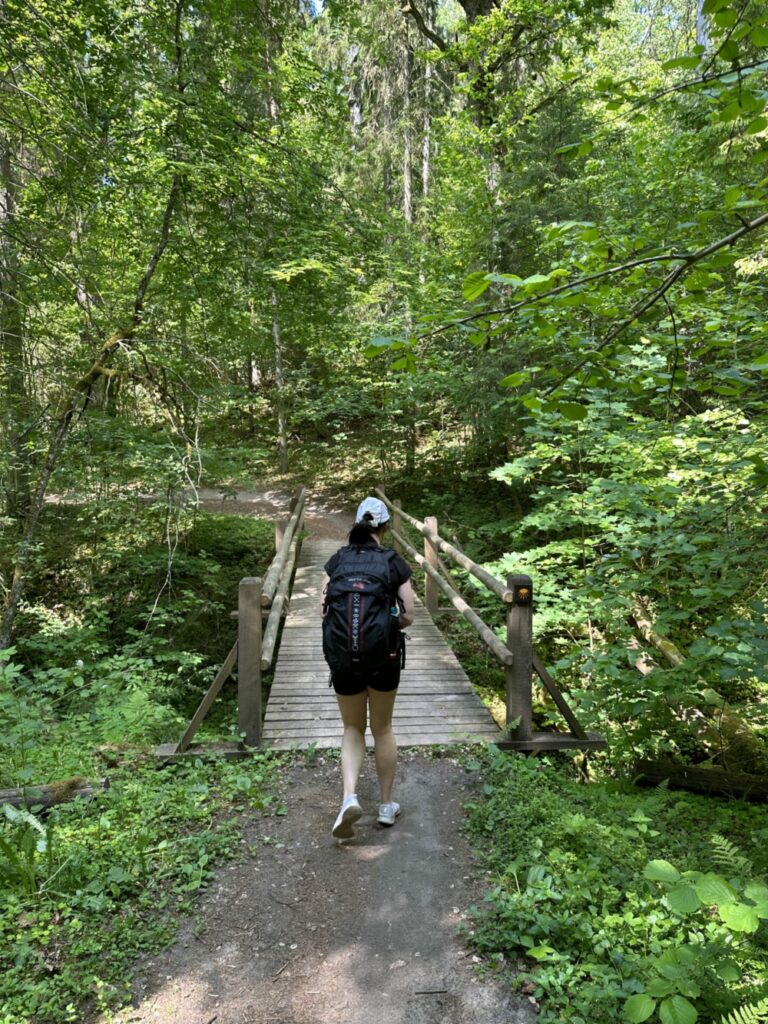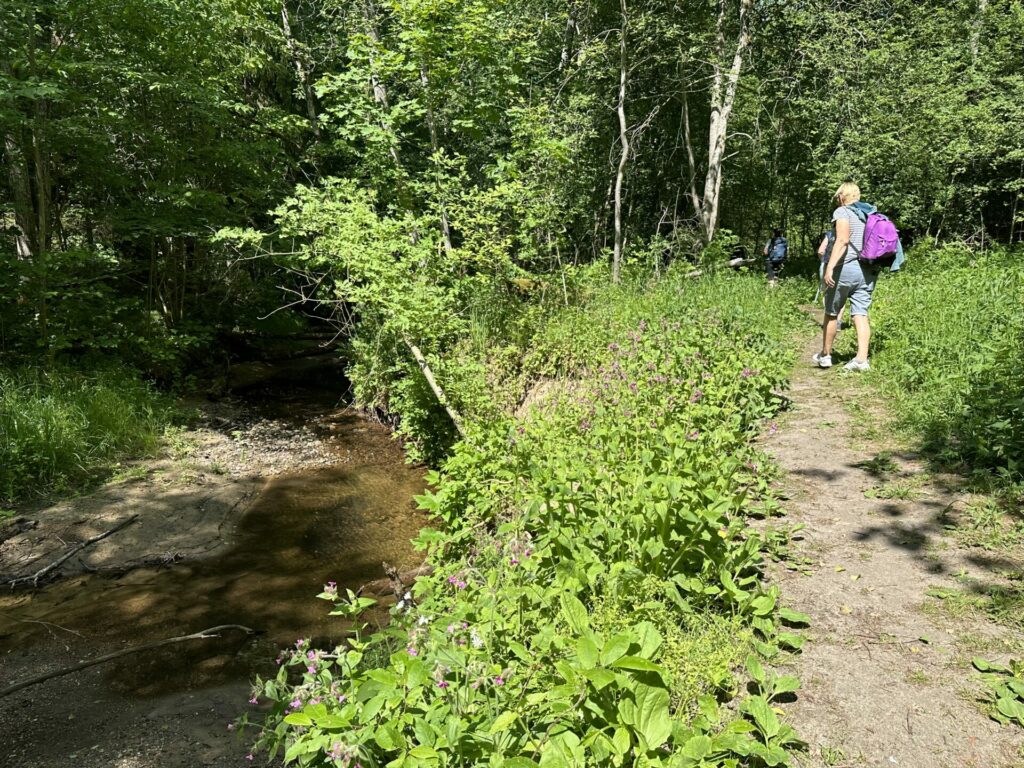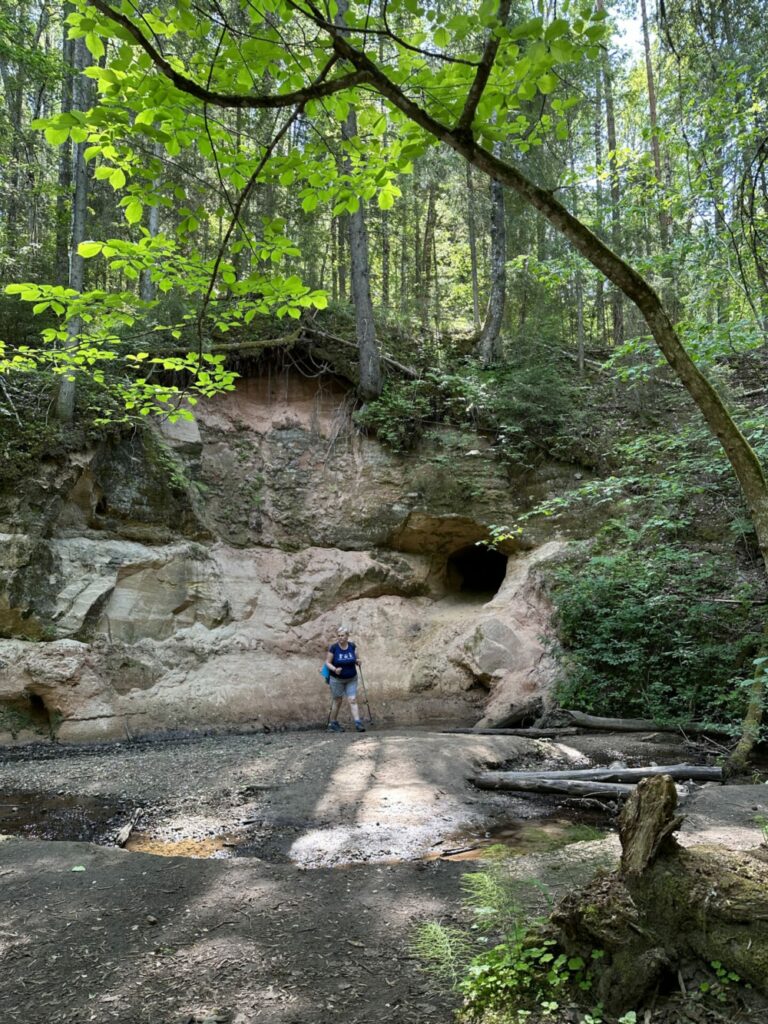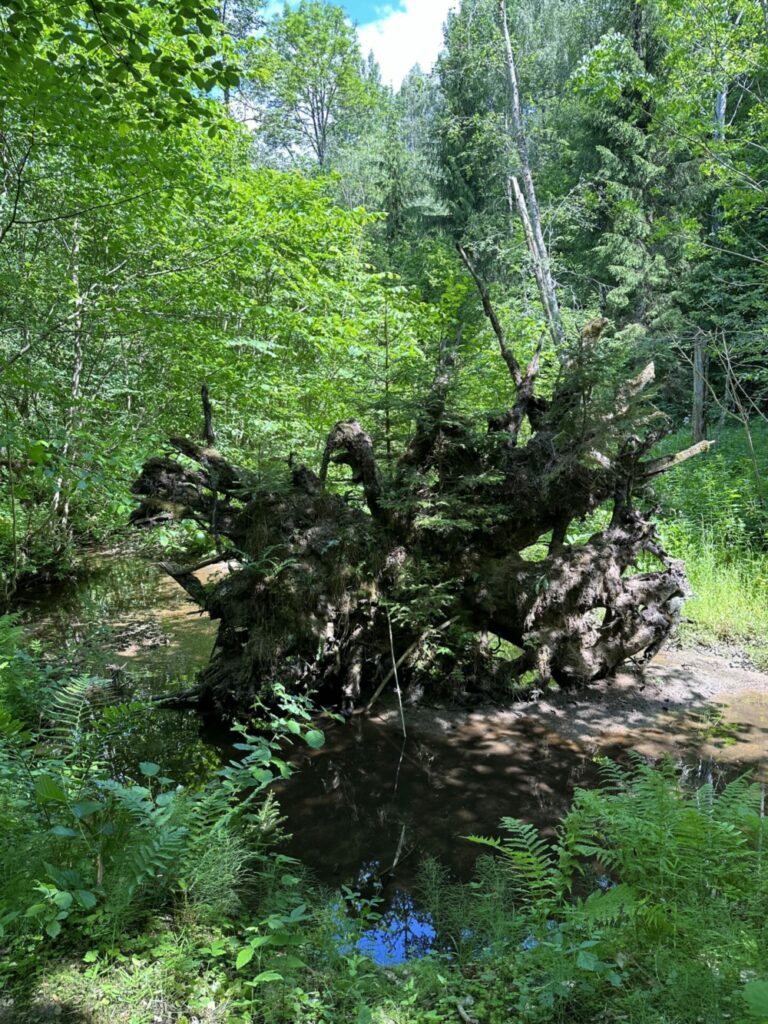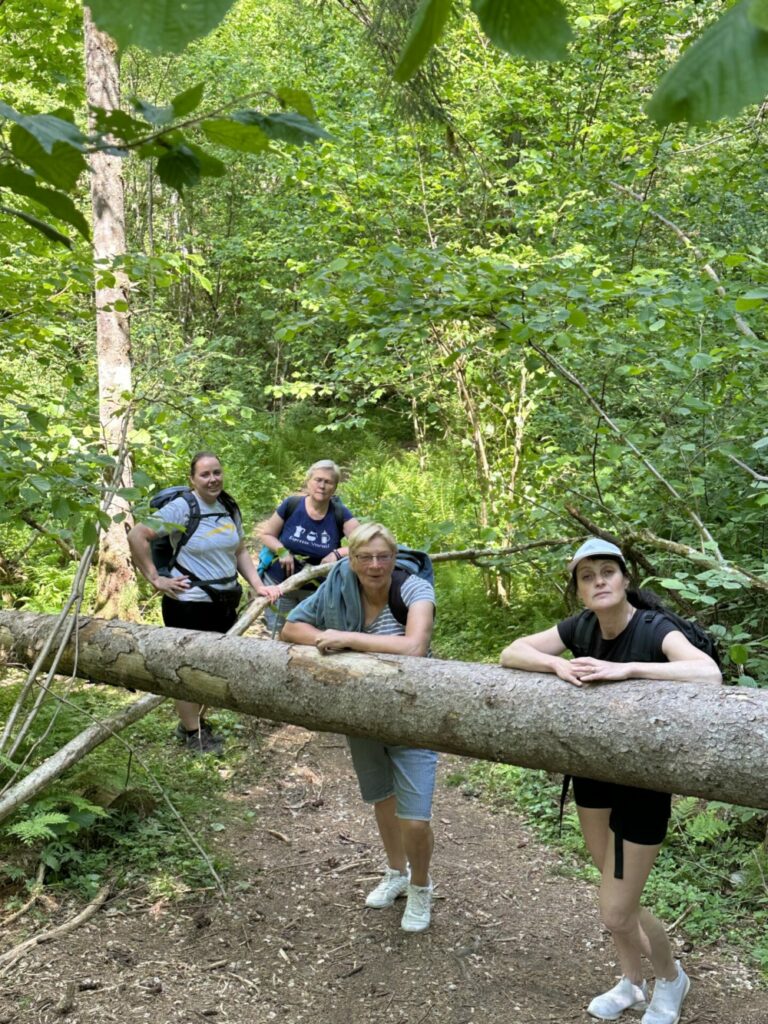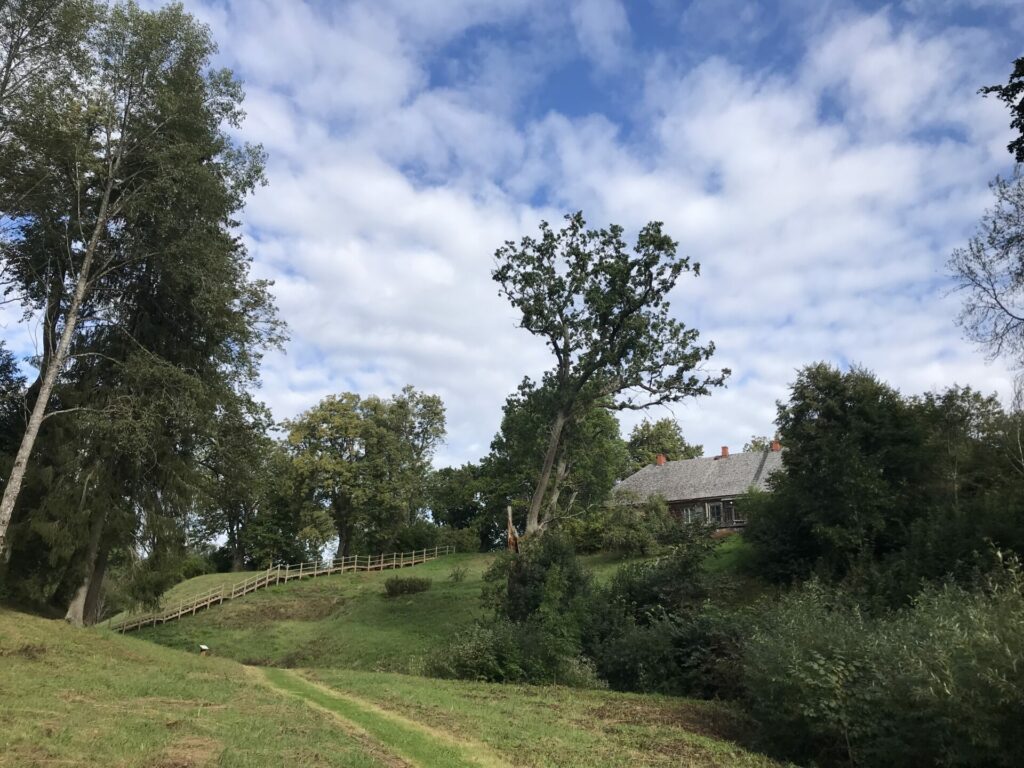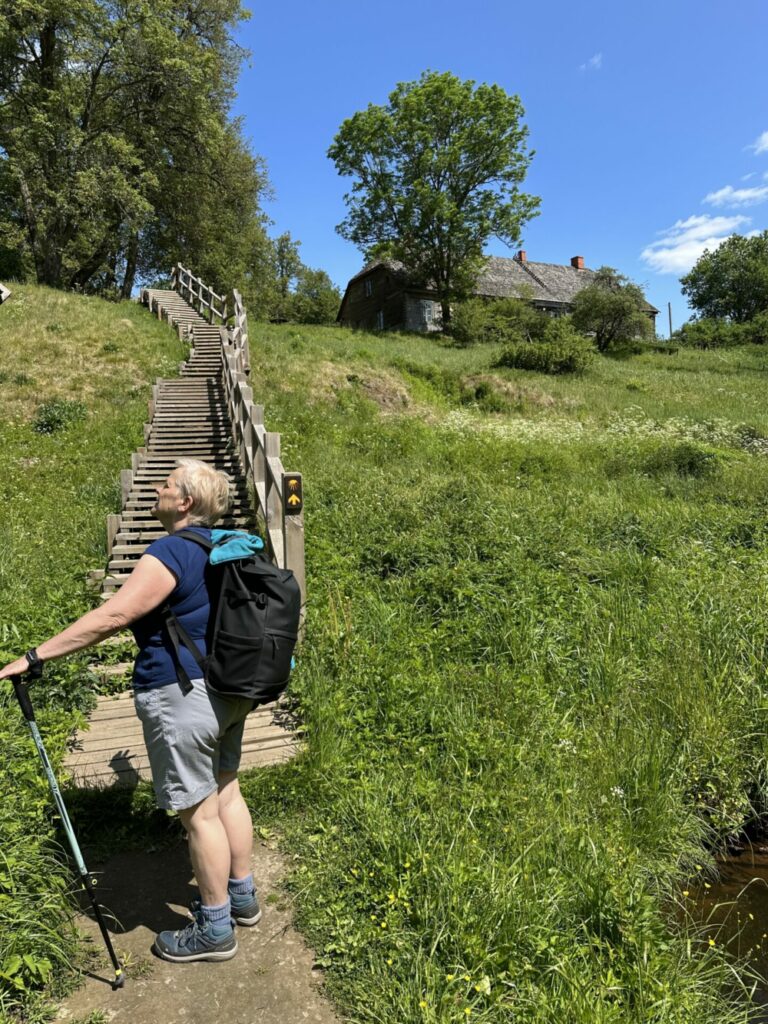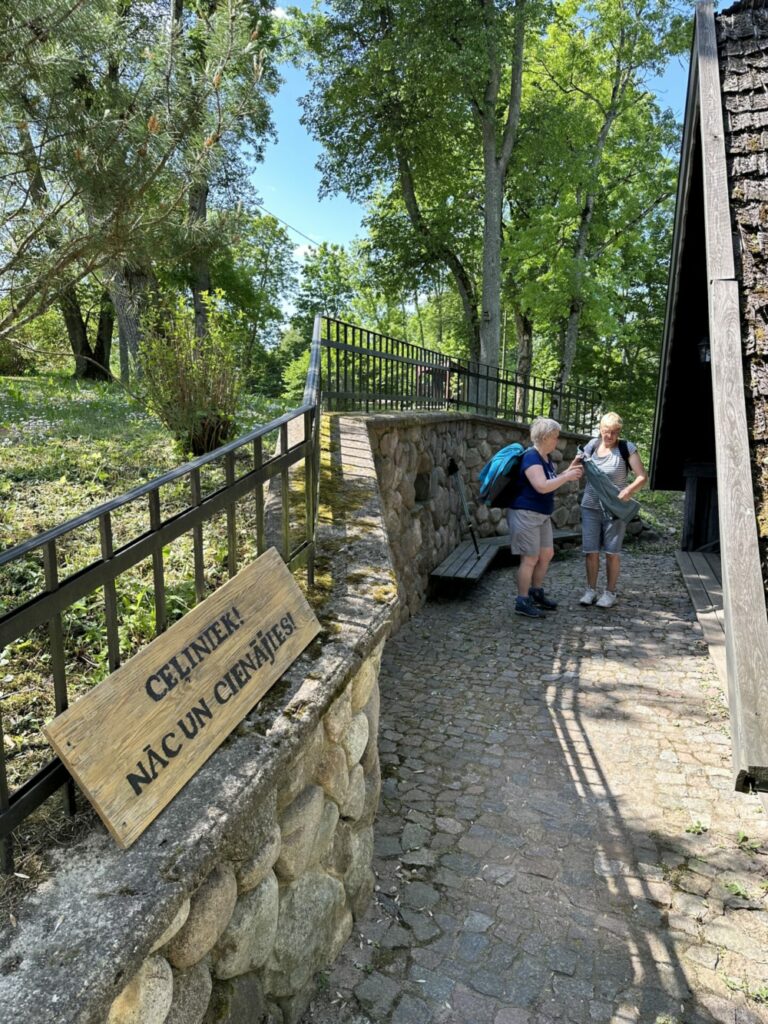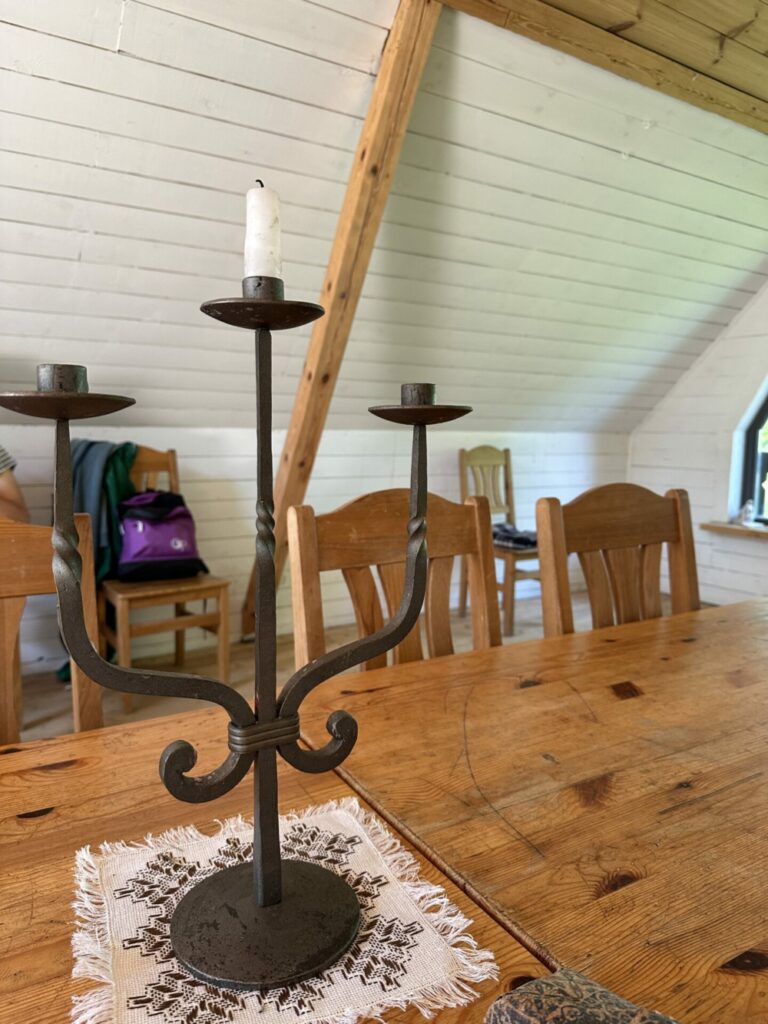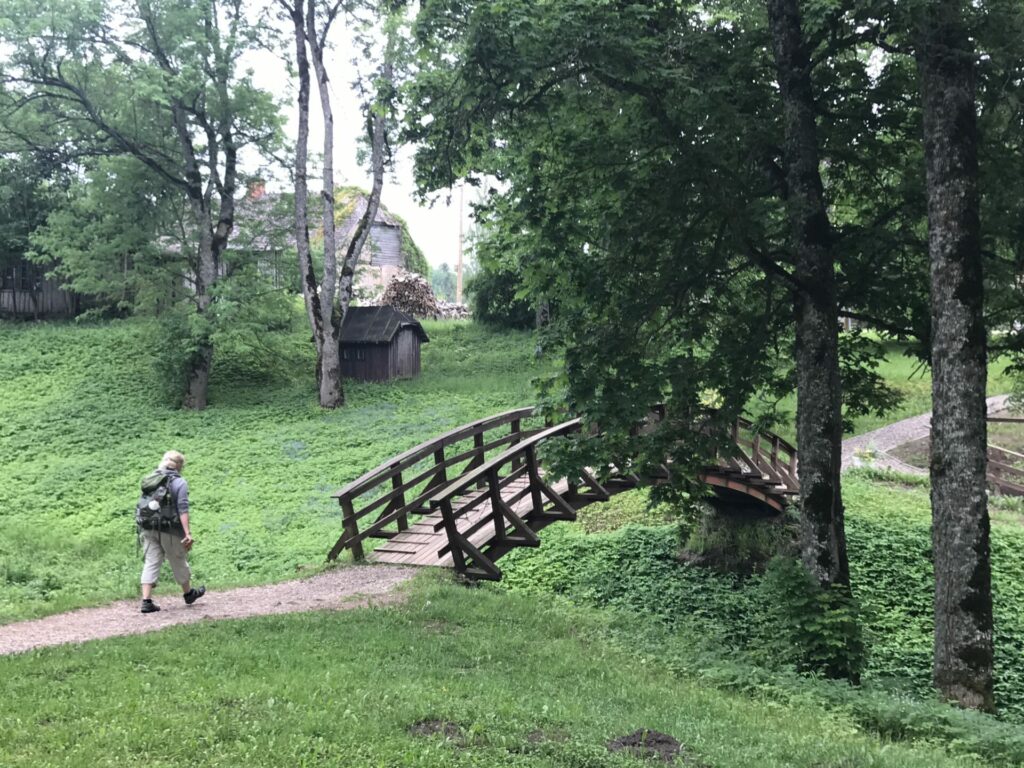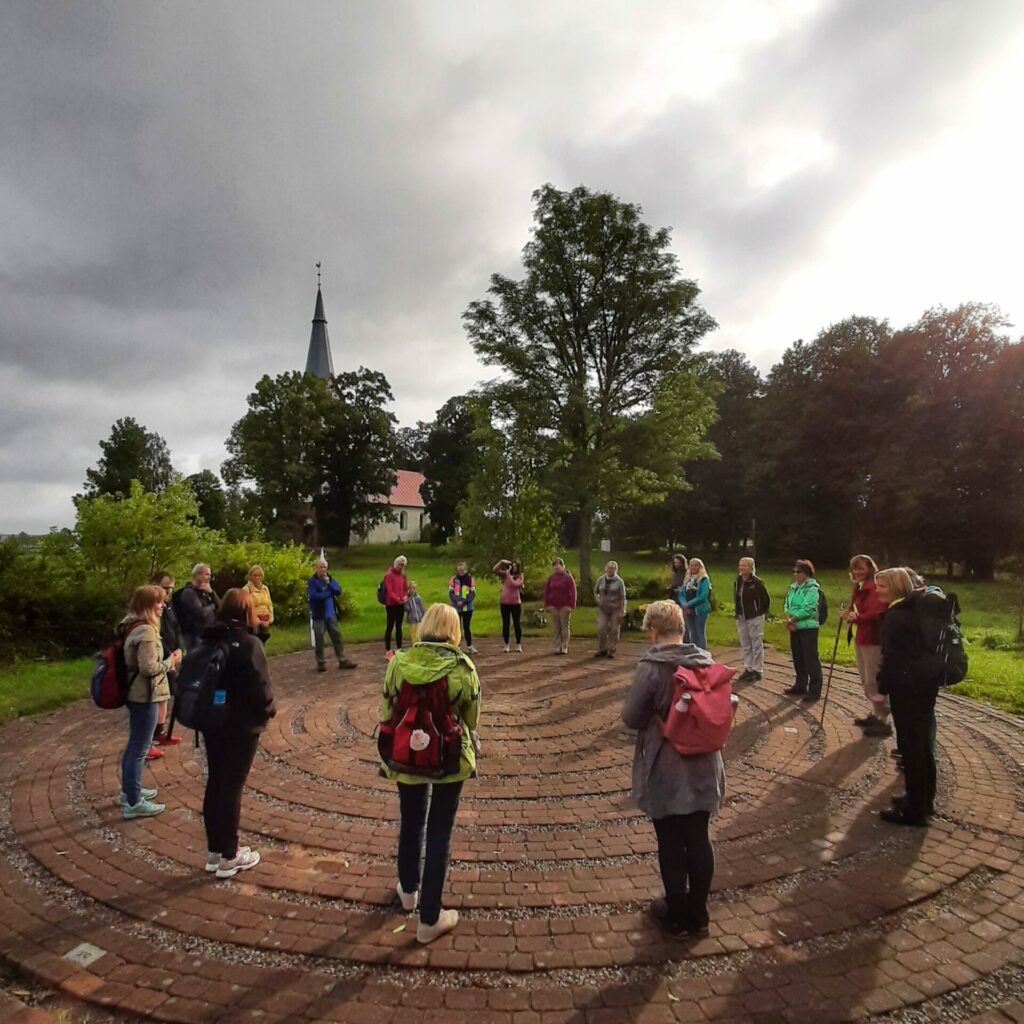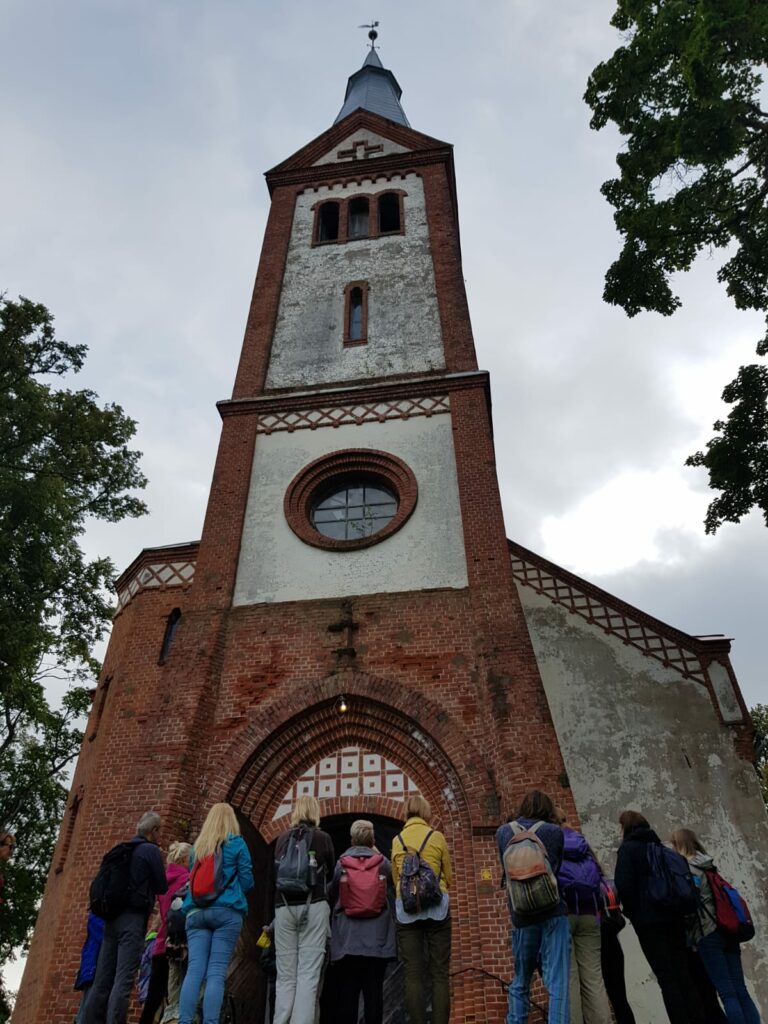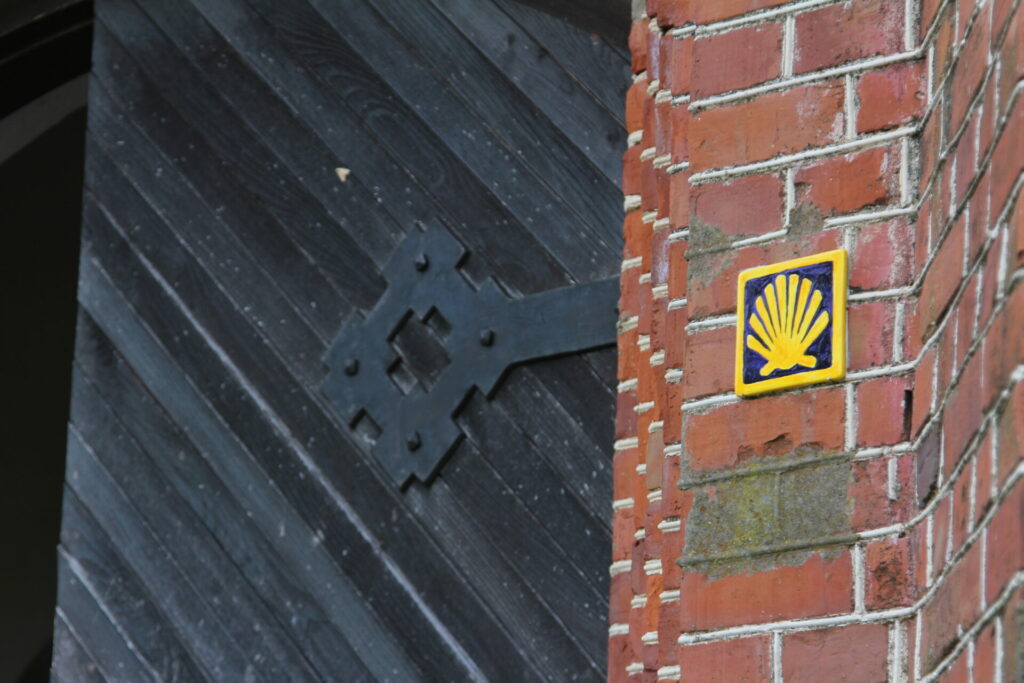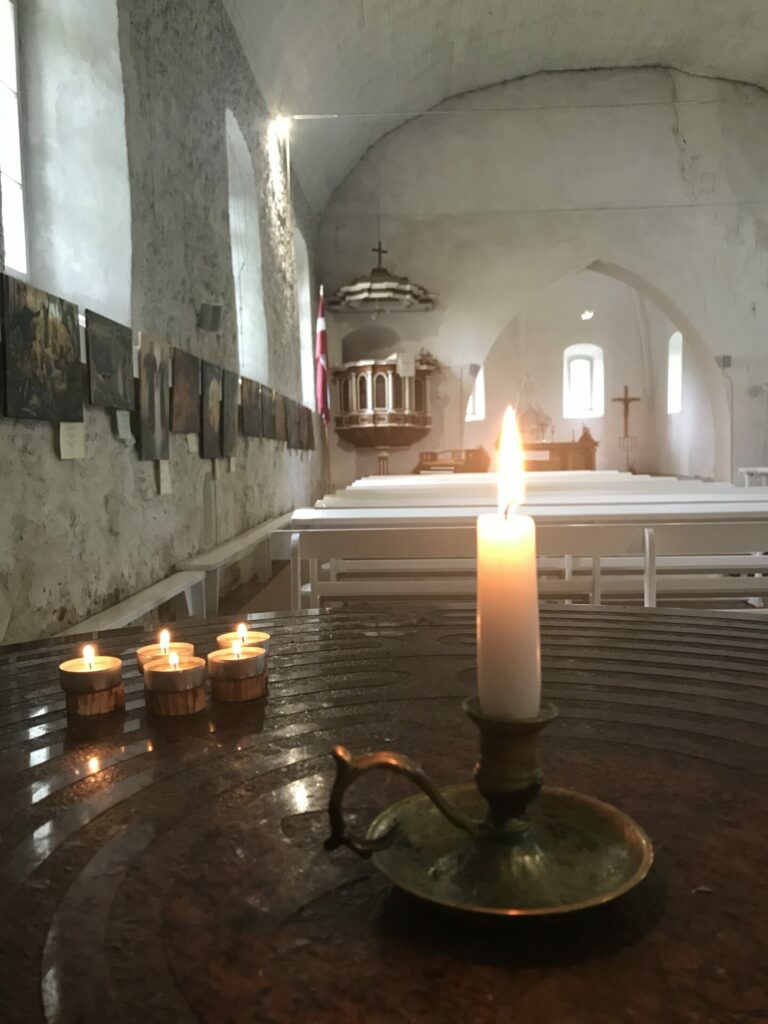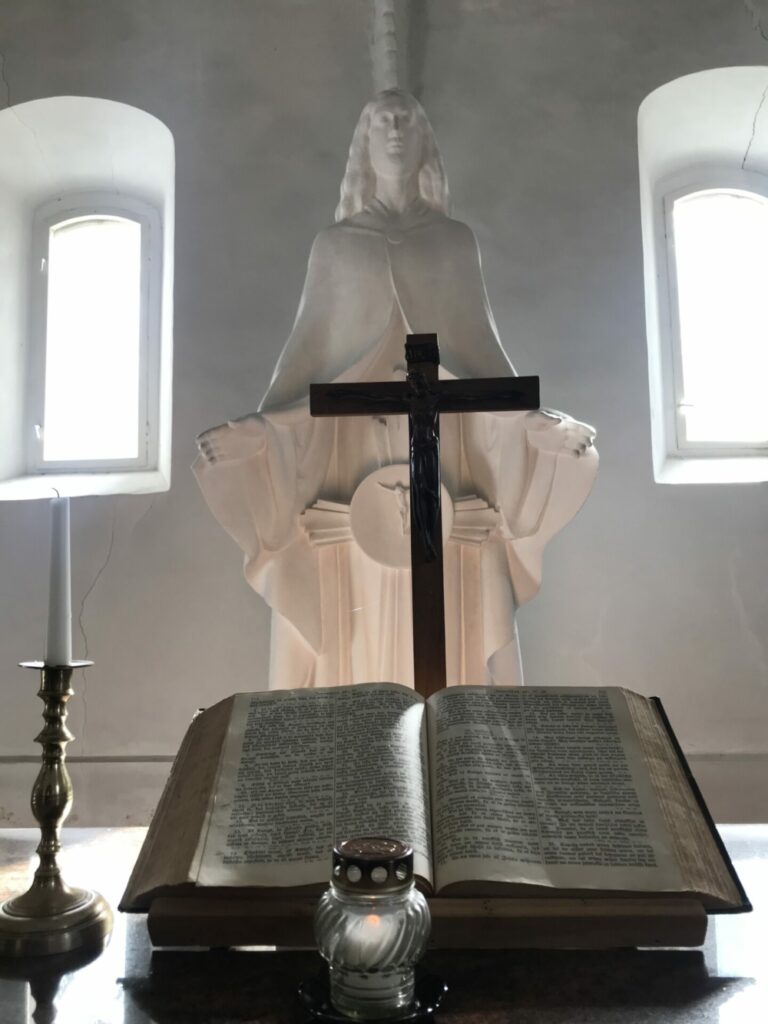Sigulda – Krimulda

Sigulda – 11 km Krimulda (Sigulda – Turaida 6.5 km)
Stage consultant – Sandra, WhatsApp or SMS, +371 29299555, e-mail: rone101010@gmail.com
This 11-kilometre long stage from Sigulda to Krimulda is a very scenic and mostly takes us through the forest.
If 11 kilometres seems too little for a whole day, you can make a hook to Turaida and visit the Turaida Palace, which is one of the best-preserved medieval palaces in the territory of Latvia. In archaeological excavations, a fragment from the St. James shell has been found in the area of Turaida Palace. St. James’s shell with holes drilled in the edges for attaching it to his clothing. Also, a medieval pilgrim-specific clay bottle what used to be attached to his belt was found in Turaida. These and other exhibits on the tradition of pilgrimage in medieval Livonia are exposited at the Turaida Palace Museum.
There will be no populated areas during this route, therefore please purchase food and drinking water beforehand – in Sigulda.
The stage starts from the Sigulda Roman Catholic Church. The beautiful building had been built in 1995 and sanctified already in September 1996. We walk down Trimpus Street to the end of the street, where we turn to the right and go down Gales Street, until we reach the intersection at the railway track. We cross the intersection, cross the railway tracks through the pedestrian passage (the Sigulda railway station is visible to the right), and then move forward until we arrive at the beginning of Krisjana Valdemara Street. To the right of us is Jāņa tirgus (market), where you can have a meal or buy something to eat, on the left, cafes. We walk down Krisjana Valdemara Street to the end of the street, turn right at the intersection, and continue our way down Sveices Street.
At 250 meters, we come to the intersection with Leona Paegles Street, where we turn to the left. Here’s the Maxima supermarket, which is the last store on this stage and where you can get everything you need for the way ahead. We continue to walk down Leona Paegles Street straight ahead and reach the Svētku square 600 metres later, which offers the city a variety of entertainment and recreational facilities every season. From here you will be able to take in the wonderful view of the Gauja river. We go on to the panoramic wheel. Immediately behind it we turn to the right and move along the park path towards the air-trotting station (“Sigulda Adventures”), but we don’t go to the end, instead we turn to the left before the station building and the parking lot. There, a steep wooden staircase leads down to the Gauja Bridge. Careful – the stairs ARE steep and can be slippery during the rain or when wet! We go downstairs and reach the Gauja Bridge, cross it.
Behind the bridge on the left, the pedestrian road leads us into the Krimulda Forest. Here the road breaks down. Those who want to look at Turaida’s museum reserve or cave (Gutmanala) can go in the direction of Gutmanala which is 1.25 km, Turaida Palace 3.3 km, but should consider a step climb upto reach Turaide. Our stage turns to the left in the direction of the Pikenes Cliff and Murjani. The road will lead us through the forest of Krimulda along the side of the hill, at times leading up to Gauja and exposing the picturesque sandstone cliffs and outcrops of Gaujmala.
In less than two kilometres, we reach the Pikenes Cliff, what is about 1km long and 70-80m high on the right bank of the Gauja river, with nearby small gorges. We go along the cliff, and on the way, we can look at Mazo Velnalu and the majestic Velnala Rocks.
The road along the cliffs of Gaujmala leads us to the pedestrian bridge over Gauja. We turn right at the bridge, step up to the next intersection, where we turn right again in the direction of the Liela Akmens and go down the path leading us up the hill. At the next crossing of the paths, we choose the way to the right, continue to the next intersection, where the pedestrian path to the Murjani departs to the left. We choose our way to the Muriani. In a short time, the path will turn sharply to the left. We are also turning, and we continue to walk down the path through the forest.
We walk down the path, following the directions to the Murjani. We cross a small river along the road and come to the next bridge over the river at 2.5 kilometres. The road across this bridge leads to the Lielais Akmens, but we continue to walk beside the Runtinupite river along the Kubeseles Trail to Krimuldas baznīca ( Krimulda church ). The path leads us up to the Saulstaru Rock and the cave near the Runtinupite river, and leads us to Krimulda. After less than a kilometre we reach Kubeseles Cave, and we have a view of the pastor’s house on the castle mound. The log building was built in the 18th century and has remained a pastor’s house until now.
We go down the path to the wooden stairs leading up the hill, walking up we see the Church of Krimulda. Krimulda has a special place in the history of the Christian Church of Latvia. The Church of Krimulda was built in 1206 and is the oldest church in Latvia. It is open daily (24/7), freely accessible to everyone at any time.
We’re heading toward the church, crossing the wooden bridge, and we’re here. The stage is completed!


